Jalopnik.com: Today’s Race Car Divers Have it Easy
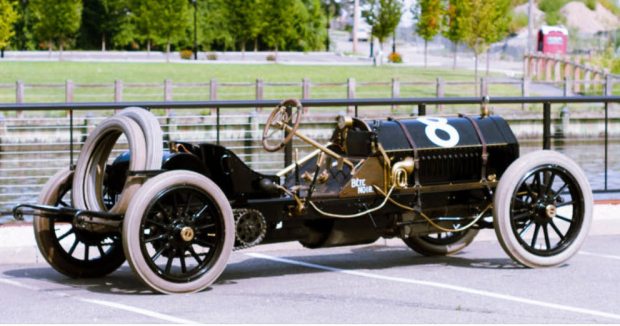
Jalopnik.com editor Raphael Orlove describes his recent experience as the mechanician for the Alco Black Beast.
Enjoy,
Howard Kroplick
Car vs. America Jalopnik.com
Today's Race Car Drivers Have It Easy
Raphael Orlove
Wednesday 5:32pm
I always thought that early race cars were kind of quaint, slowly belching their way down roads at speeds you’d get on a merry-go-round today. No. These things were fast and everyone who raced anything like this was a goddamn lunatic.
A couple weeks back, my coworker Mike and I retraced the route of the Vanderbilt Cup, America’s first great international auto race, which took place on public roads that are still open in the quiet suburbs outside New York City in Long Island.
We ran the course as it was run in 1909 because the day prior to our run, I got a ride in the car that won the 1909 Vanderbilt Cup, an ALCO. (It won the 1910 race, too, if you’re curious.)
To put this whole timeframe in context, ALCO was a train manufacturer. (ALCO stood for American Locomotive Company.) Cars were still a relatively new invention even after the turn of the century, and there was yet to be a standard format of what a car should be, or how it was supposed to be made. Anybody with some attitude and mechanical expertise could get into cars and be successful at it, like this ALCO.
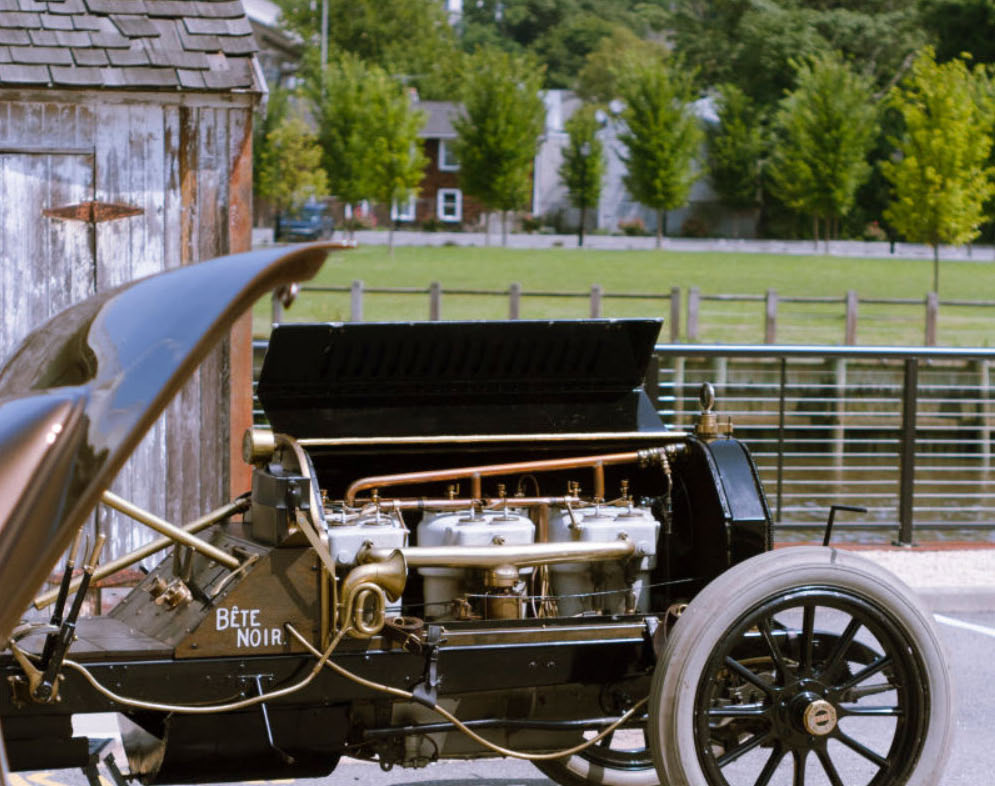
The specs don’t sound that impressive by 2017 standards. It had a six-cylinder engine making 100 horsepower, running through a four-speed transmission. It weighed 3,306 pounds, as the car’s current owner and historian Howard Kroplick notes, and supposedly would top out at 121 miles per hour. Today, this all sounds pretty ordinary. A Chevy Lumina has similar specs.
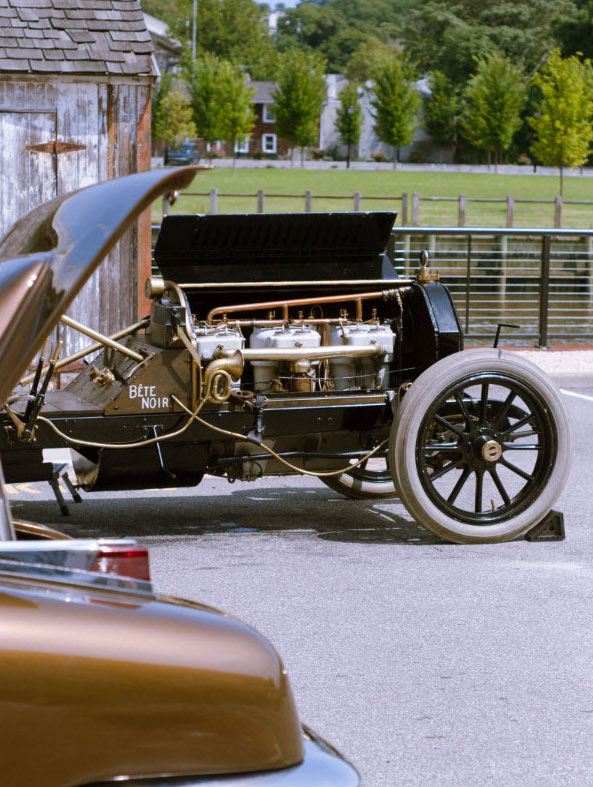
Some more details of the 1909 ALCO: that engine was 11.5 liters. It redlined at 1,400 RPM. It sent power to the rear wheels through two sets of giant chains. It had 36-inch wheels with tires four and a half inches wide. The frame and suspension make a pickup truck look modern.
It required two people to operate: a driver to work the controls, including manually controlling the spark, and a mechanician tasked with, among other things, pumping a giant lever to make fuel pressure.
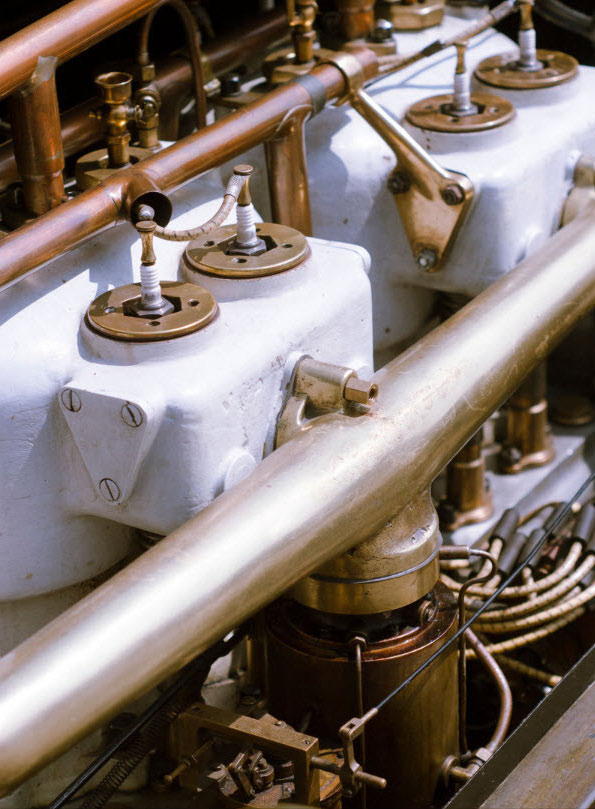
What’s more, this was a remarkably current car for 1909, technologically and advanced for the day. Compared to the carts and carriages people were used to seeing in Long Island back then, it was a spaceship.
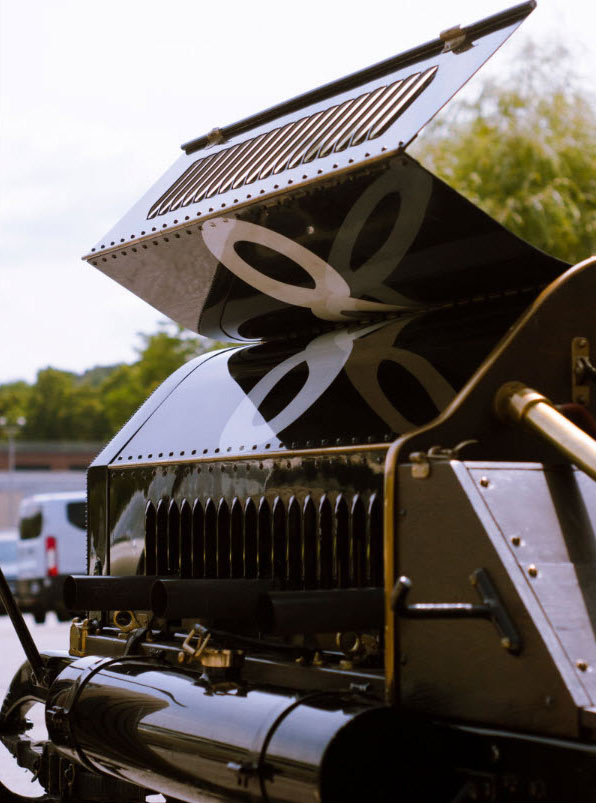
Again, I got to ride in this thing with its owner, Howard Kroplick. It was more like I was on the car than anything else. The seats on the car are basically stools, and there are no belts. Howard held on to the steering wheel. I got a handle affixed to the side of his seat. I had to reach behind him and cling on for dear life as he fired the car up and set off on a little loop around his Long Island town.
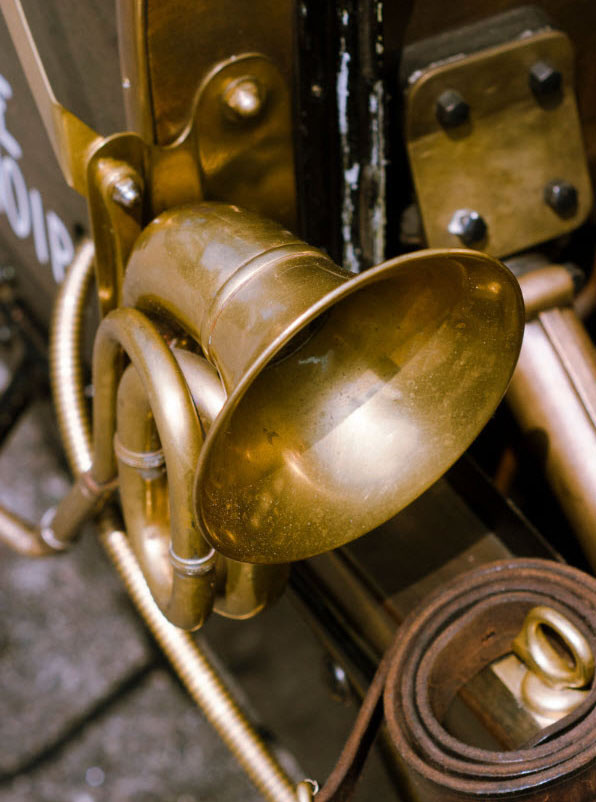
It’s easy to think of the noise. The car is deafening. Everything in the engine is exposed. Spark plugs stand proud, and the whole valvetrain pops up and down in plain air.
It’s easy to think about the smell, too. The exhaust pipes exit right out of the cylinders, blowing right at me. The floorboards of the car are actual boards of wood. Everything else is leather and brass, ticking and clanging and running up into my nose.
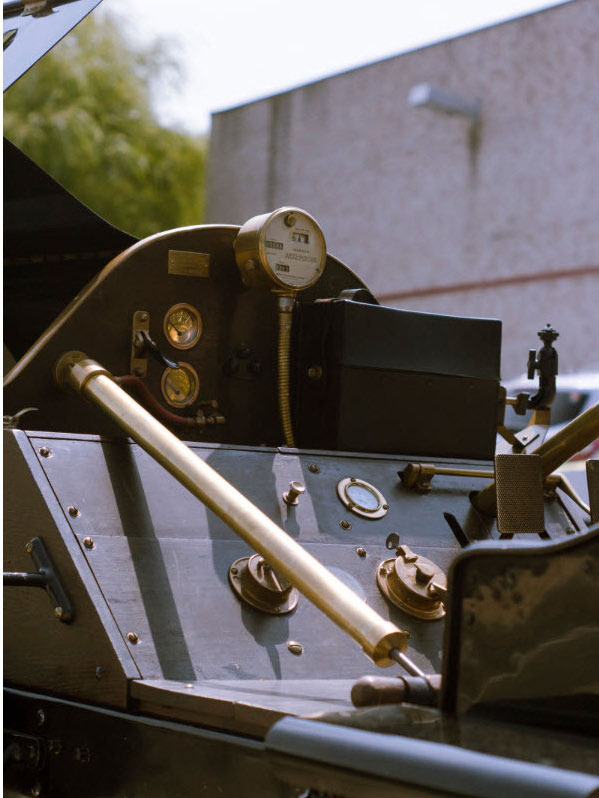
But it’s mostly the taste that sticks with me. Flecks of oil and god knows what else streamed back into my face out of the exhaust and from the rest of the car. Not many cars have a flavor.
And no car today has as visceral a feeling of impending destruction as this car. Every piece of it is shaking. Violently. At all times. Your eyeballs start to wiggle out of your head. The engine at least doesn’t feel like it’s going to rip itself apart. I did often get the sensation that a wheel could get thrown off at any time, but I didn’t have too much time to think about that, mostly concerned with the feeling that I would get thrown off first. Howard and I barely breezed past thirty miles an hour on little North Shore streets. In period this car cruised past 100.
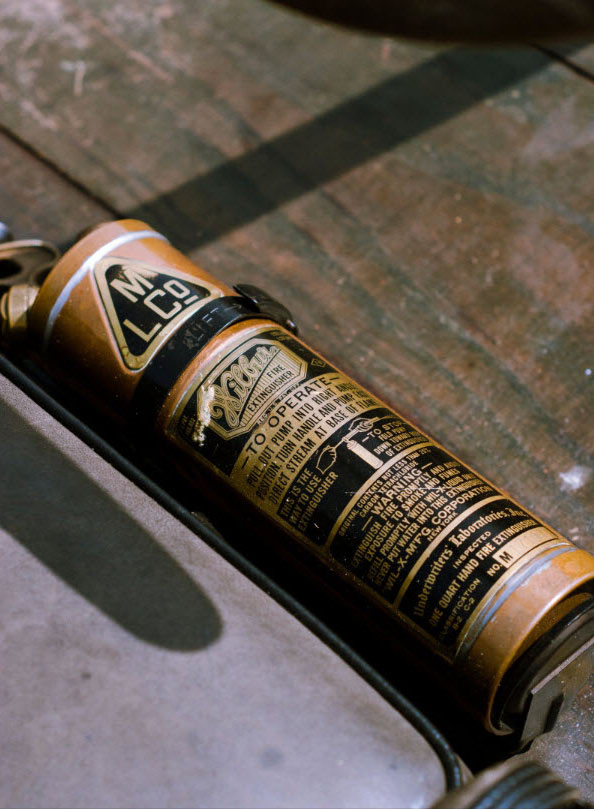
Everyone who raced a car back then. Lunatics. All of them.
As it was, the ALCO got hotter and hotter on our short ride, clearly wanting to go fast not slow. We heard a clang, not knowing what it was at the time, but quickly realized something was up as smoke started belching out of the front of the car. When we finally pulled back into Howard’s garage, we found the car blenching coolant, its cooling fan snapped off of its mount and the belt free lying by it.
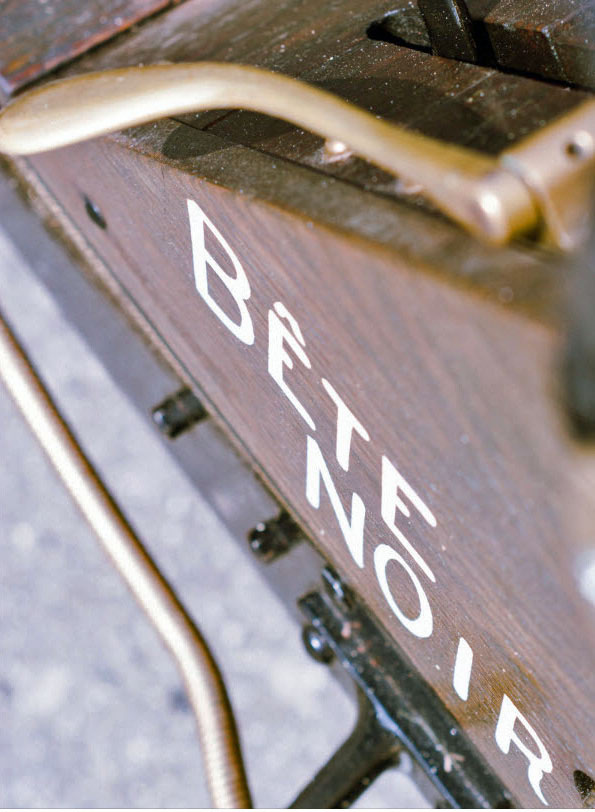
The car is called the Bête Noir, a typo they made at the time that Howard hasn’t had the heart to fix. It very much has the feeling of a beast to it, almost cruel and alive. Pootling around in the car at traffic speeds felt like taking your life into your own hands. Racing these things, on mostly unpaved roads, over ridges and at times through crowds, is virtually unthinkable.
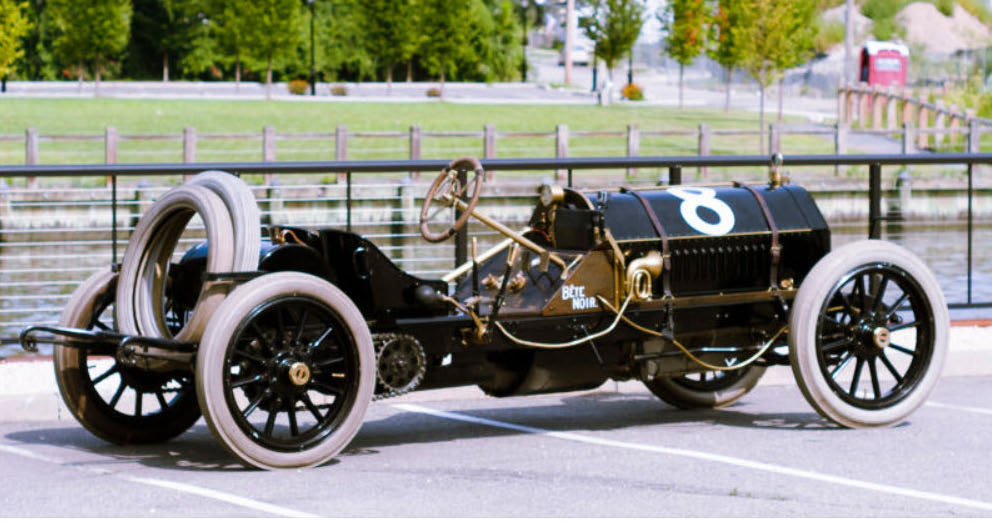
Check out this episode next Wednesay, November 15tht 8:30 p.m. ET and PT on Fusion.
Find out if you have Fusion here, and check out how to get the Watch Fusion app on Amazon Fire TV & Stick, Roku, Chromecast, iPhone, iPad, Android Mobile, Android tablets and more. Don’t have cable? You can still catch it on Apple TV and the Sling app.





Comments
All those flecks of oil, all that blue exhaust, all that thrashing of chains and vibration. Gee its a real car with lock to lock steering: a car that you drive not one that drives you. There is nothing that can compare with a ride at speed in a chain drive beast. You are immediately transported back to the dawn of motoring and gain a real appreciation for skill and endurance of the early drivers. Bravo!!!
Great write-up! I beg to differ with Penny, however. Try driving a supercharged 1928 7.020 litre SS Mercedes with the three-pointed star 10 feet away out front, stiff underslung springing, brutal steering, mechanical brakes, and the accelerator pedal BETWEEN the clutch and brake pedals! After the star starts around a turn, it feels as if it takers five minutes before the cowl, and then you, follow. Add to that the frantically-anxious owner of this museum-piece next to you and you match any ALCO or Tucker drive. Sam, III
No Autonomous driving involved here.